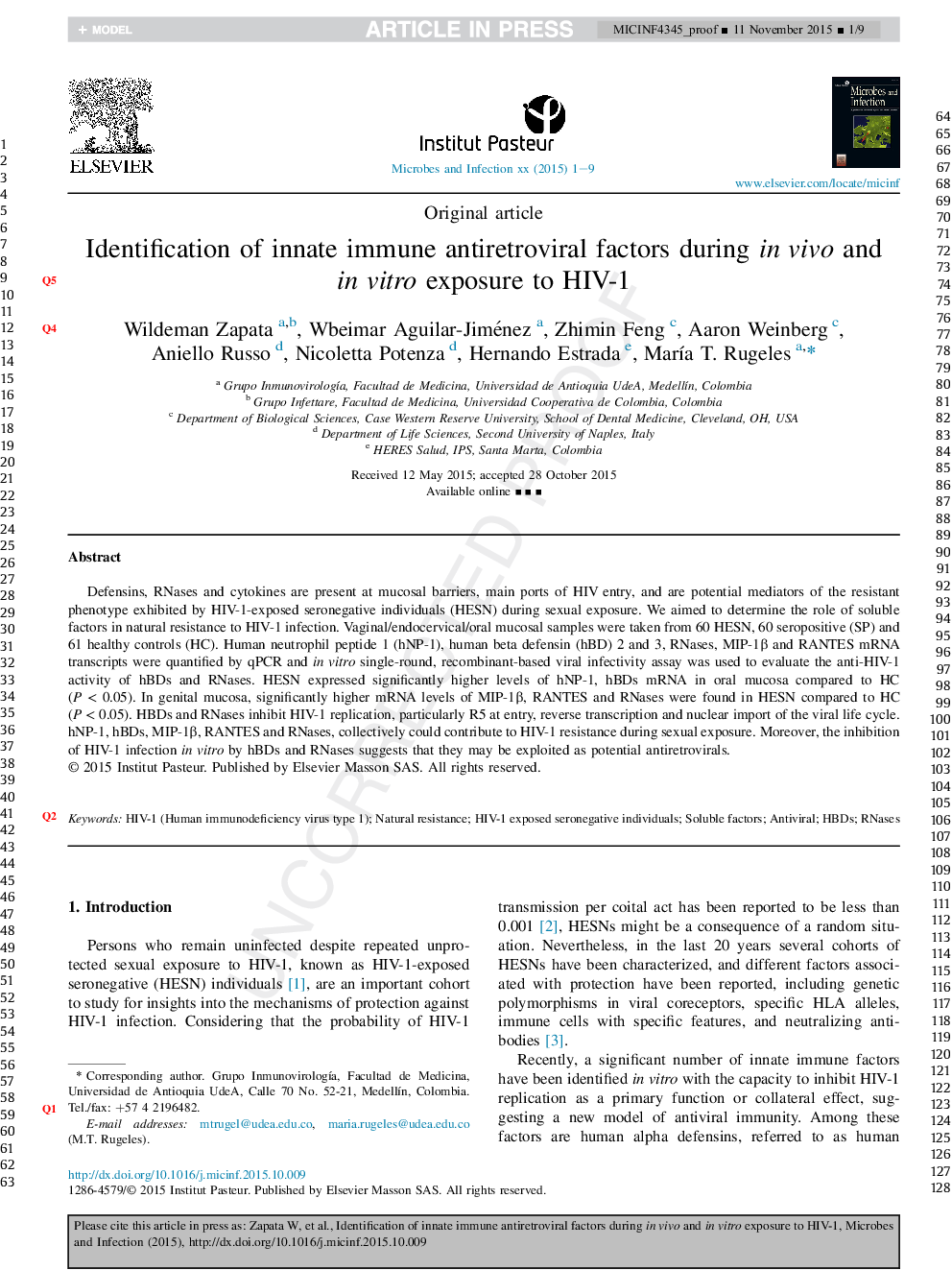| کد مقاله | کد نشریه | سال انتشار | مقاله انگلیسی | نسخه تمام متن |
|---|---|---|---|---|
| 6135643 | 1224878 | 2016 | 9 صفحه PDF | دانلود رایگان |
عنوان انگلیسی مقاله ISI
Identification of innate immune antiretroviral factors during in vivo and in vitro exposure to HIV-1
دانلود مقاله + سفارش ترجمه
دانلود مقاله ISI انگلیسی
رایگان برای ایرانیان
موضوعات مرتبط
علوم زیستی و بیوفناوری
ایمنی شناسی و میکروب شناسی
ایمونولوژی
پیش نمایش صفحه اول مقاله

چکیده انگلیسی
Defensins, RNases and cytokines are present at mucosal barriers, main ports of HIV entry, and are potential mediators of the resistant phenotype exhibited by HIV-1-exposed seronegative individuals (HESN) during sexual exposure. We aimed to determine the role of soluble factors in natural resistance to HIV-1 infection. Vaginal/endocervical/oral mucosal samples were taken from 60 HESN, 60 seropositive (SP) and 61 healthy controls (HC). Human neutrophil peptide 1 (hNP-1), human beta defensin (hBD) 2 and 3, RNases, MIP-1β and RANTES mRNA transcripts were quantified by qPCR and in vitro single-round, recombinant-based viral infectivity assay was used to evaluate the anti-HIV-1 activity of hBDs and RNases. HESN expressed significantly higher levels of hNP-1, hBDs mRNA in oral mucosa compared to HC (P < 0.05). In genital mucosa, significantly higher mRNA levels of MIP-1β, RANTES and RNases were found in HESN compared to HC (P < 0.05). HBDs and RNases inhibit HIV-1 replication, particularly R5 at entry, reverse transcription and nuclear import of the viral life cycle. hNP-1, hBDs, MIP-1β, RANTES and RNases, collectively could contribute to HIV-1 resistance during sexual exposure. Moreover, the inhibition of HIV-1 infection in vitro by hBDs and RNases suggests that they may be exploited as potential antiretrovirals.
ناشر
Database: Elsevier - ScienceDirect (ساینس دایرکت)
Journal: Microbes and Infection - Volume 18, Issue 3, March 2016, Pages 211-219
Journal: Microbes and Infection - Volume 18, Issue 3, March 2016, Pages 211-219
نویسندگان
Wildeman Zapata, Wbeimar Aguilar-Jiménez, Zhimin Feng, Aaron Weinberg, Aniello Russo, Nicoletta Potenza, Hernando Estrada, MarÃa T. Rugeles,